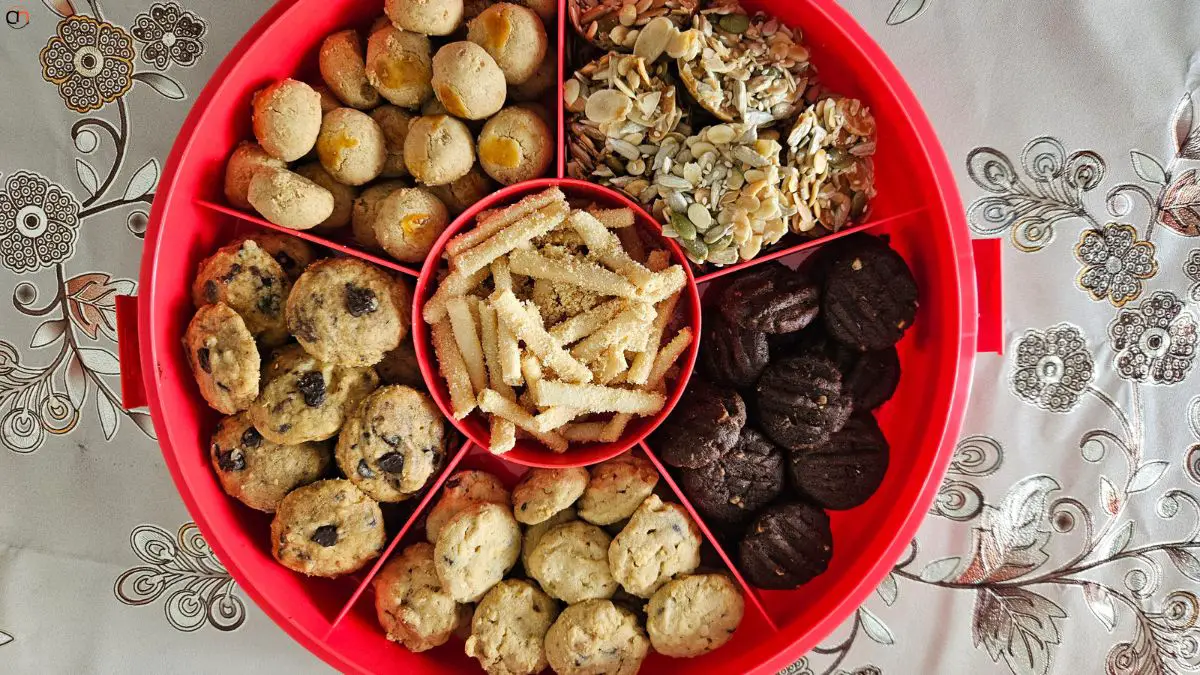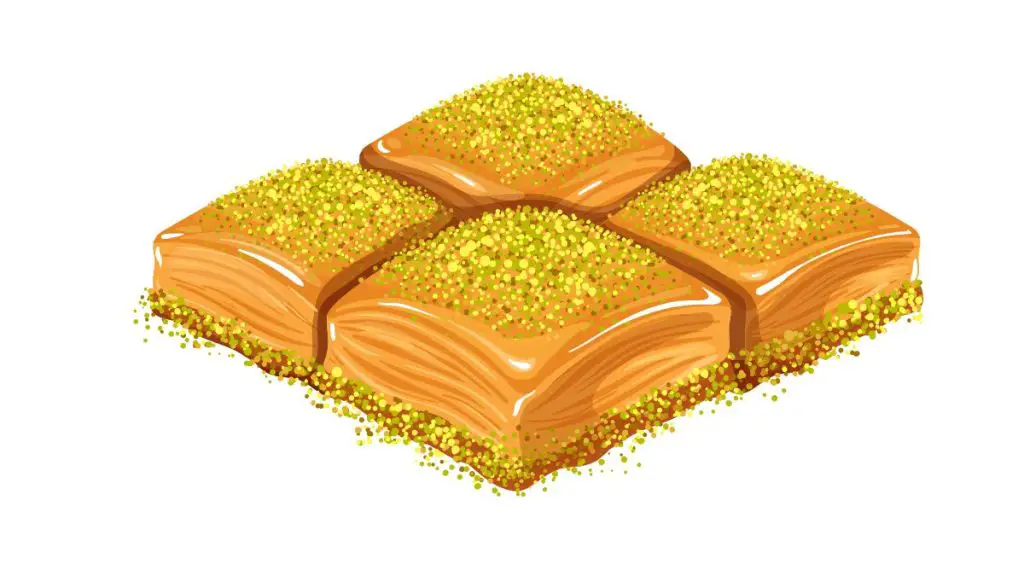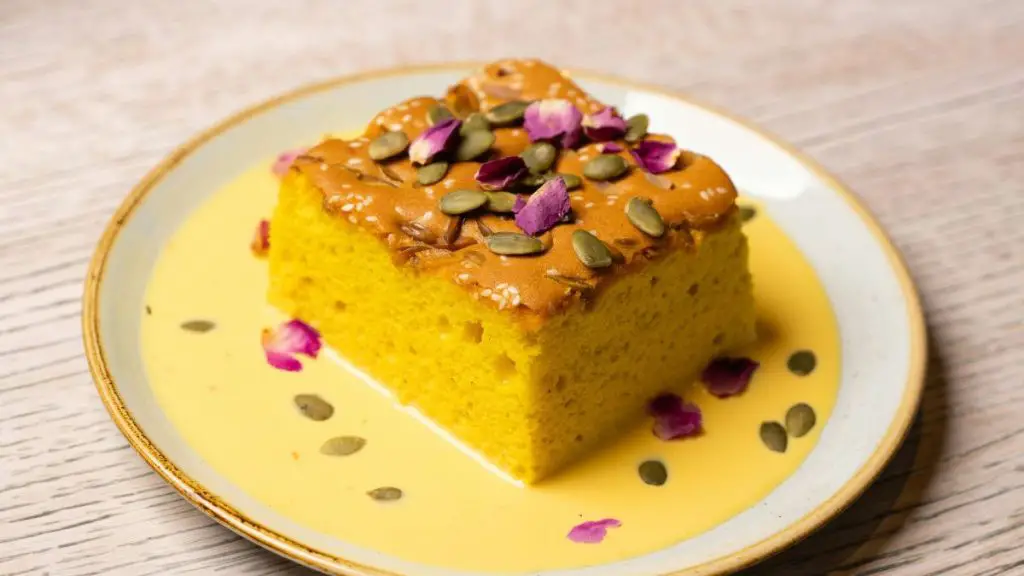Eid, a time of joy, gratitude, and togetherness, is celebrated with fervor by millions of Muslims around the world.
While the occasion marks the end of fasting during Ramadan, it is also a time to indulge in some of the most beloved culinary traditions. Among the highlights of this festive celebration are the traditional sweets—delicious, rich in flavor, and often passed down through generations.
Each sweet has a story, a history, and a cultural significance that transcends borders, from the flaky, syrup-soaked Baklava to the melt-in-your-mouth Ma’amoul.
Get 15 traditional eid sweets, exploring the ingredients, history, and the joy they bring to families during this special time of year.
Role of Sweets in Eid Gatherings:
Sweets are an essential part of Eid celebrations, playing a symbolic and unifying role in bringing families and communities together. After a month of fasting, the arrival of Eid is marked by an abundance of delicious desserts that represent the joy of breaking the fast. These sweets, whether served in small family settings or large communal feasts, are a way of celebrating the end of Ramadan and the beginning of a festive time filled with gratitude and togetherness.
1. Symbol of Celebration and Gratitude
Eid is a time of abundance, and the rich, sugary desserts reflect this after weeks of fasting. Offering these treats is a way to express thankfulness for the strength and patience during Ramadan. The sweetness of the desserts symbolizes the sweetness of life and blessings received.
2. A Tradition of Sharing and Generosity
Sweets on Eid are not just meant for the family; they are often shared with neighbors, friends, and even strangers, symbolizing hospitality and generosity. It’s common for families to exchange boxes of homemade treats, extending goodwill and reinforcing a spirit of unity. This sharing helps spread the joy of Eid far beyond the family circle.
3. Strengthening Bonds
Eid sweets often bring families together in the kitchen, as the preparation of these treats is a cherished tradition passed down through generations. Whether it’s making Ma’amoul, Baklava, or Knafeh, the process of preparing and enjoying these sweets becomes an act of bonding and preserving cultural heritage.
4. A Festive Centerpiece
The sight of a table laden with colorful, beautifully arranged sweets creates a festive atmosphere, signaling that Eid has arrived. These desserts become a centerpiece of the celebration, sparking conversation and drawing people together. They add to the visual and sensory experience of the gathering, making the occasion even more special.
They represent celebration, hospitality, family traditions, and cultural identity, playing a central role in creating a joyful, inclusive atmosphere during Eid gatherings.
15 Traditional Eid Sweets:
Eid is a time of indulgence, and traditional sweets take center stage in celebrations.
If it’s the delicate flavors of the Middle East or the rich, spiced desserts of South Asia, these treats not only satisfy the sweet tooth but also carry deep cultural and historical significance. Here are 15 beloved traditional eid sweets that make every Eid celebration extra special:
1. Baklava (Middle East, Central Asia, Mediterranean)
A timeless classic, Baklava consists of layers of flaky filo pastry filled with finely chopped nuts (often pistachios, walnuts, or hazelnuts) and drenched in honey or syrup. Its rich sweetness and crunchy texture make it a favorite at any Eid table.
2. Ma’amoul (Middle East, North Africa)
These shortbread-like cookies are often filled with dates, nuts, or figs. Beautifully shaped with intricate patterns, Ma’amoul are a staple in many households and are a symbol of hospitality during Eid.
3. Knafeh (Levant)
A popular dessert made from shredded filo dough layered with sweetened cheese, Knafeh is soaked in syrup and often garnished with pistachios. Its combination of sweet and savory flavors makes it a crowd-pleaser at Eid feasts.
4. Seviyan (South Asia)
Seviyan is a comforting dessert made with vermicelli, milk, sugar, and ghee. Spiced with cardamom and topped with nuts, it’s a traditional Eid treat in countries like Pakistan and India.
5. Luqaimaat (Gulf Region)
These deep-fried dough balls are soaked in honey or syrup, making them crispy on the outside and soft on the inside. They are a popular street food during Eid in the Gulf countries.
6. Ghriba (North Africa)
Ghriba are delicate, almond-based cookies often flavored with orange blossom water or sesame seeds. Their melt-in-your-mouth texture and subtle sweetness make them a perfect Eid treat, especially in Morocco and Algeria.
7. Sheer Khurma (South Asia)
A rich, milk-based dessert made with vermicelli, dates, nuts, and saffron, Sheer Khurma is often served at Eid breakfast in Pakistan, India, and Afghanistan, bringing warmth and sweetness to the start of the celebration.
8. Atayef (Middle East)
These small stuffed pancakes are filled with sweetened cheese, nuts, or cream, then folded into half-moon shapes. Atayef is a popular Eid treat in the Levant and is often drizzled with syrup for extra sweetness.
9. Zainab’s Fingers (Egypt)
These are fried dough pastries that are crispy on the outside and soft on the inside, often flavored with vanilla and drenched in syrup. They are a popular dessert for Eid in Egypt.
10. Qatayef (Arab World)
Similar to Atayef but often larger, Qatayef are stuffed with a variety of fillings, such as sweet cheese, walnuts, or cream. They’re fried or baked and are a beloved Ramadan and Eid treat across the Arab world.
11. Baklava (Turkey)
While Baklava is enjoyed across many regions, the Turkish version often features a unique blend of walnuts or pistachios and a light syrup soaked into perfectly layered pastry. Turkish Baklava is known for its exquisite balance of sweetness and flakiness.
12. Fawazi (Southeast Asia)
Fawazi is a Malaysian and Indonesian dessert made from glutinous rice flour, sugar, and coconut milk, shaped into small balls and steamed. These soft, chewy treats are often colored and served as a festive snack during Eid.
13. Barazek (Syria)
These sesame-crusted cookies are crunchy, sweet, and savory at the same time. Often filled with pistachios or almonds, Barazek are a popular Eid treat in Syria and surrounding regions.
14. Halawat al-Jibn (Levant)
This sweet cheese dessert is made from a dough of semolina, sugar, and melted mozzarella cheese, rolled into thin layers and filled with pistachios. Soaked in syrup, it’s a unique, indulgent Eid sweet.
15. Saffron Cake (South Asia)
A fragrant, moist cake infused with the delicate flavor of saffron, this dessert is commonly served in parts of Pakistan and India. It’s often decorated with slivers of pistachio or almonds for a festive touch.
Each dessert carries a unique history and significance, making Eid even more memorable for those who gather to enjoy them. Whether shared with family, gifted to neighbors, or enjoyed with friends, these sweets help
Last Call:
- Traditional Eid sweets are an integral part of the celebration, offering a delightful way to mark the end of Ramadan.
- These treats not only bring people together but also celebrate the rich culinary heritage passed down through generations.
- If it’s the syrupy Knafeh or the fragrant Ma’amoul, Eid sweets are a cherished part of the festivities that add sweetness to every gathering.
Call to Action:
- Which traditional Eid sweet holds a special place in your heart? Share your favorites or family recipes in the comments below!
- This Eid, try something new and share the sweetness of tradition with those around you.
Get More: 10 Ramadan Food Ideas
FAQs | traditional eid sweets
Q. What is the traditional eid al adha sweets?
Traditional sweets for Eid al-Adha vary by region but commonly include treats like Baklava, Ma’amoul, Knafeh, and Luqaimaat. These rich, indulgent desserts are shared among family and friends to celebrate the festival.
Q. How are Eid al-Adha sweets different from those for Eid al-Fitr?
While both occasions feature sweet treats, Eid al-Adha’s desserts tend to have heartier, richer flavors, often including more nuts, syrup, and cheese-based desserts like Knafeh and Qatayef, reflecting the festive nature of the sacrifice.
Q. What is the significance of sweets during Eid al-Adha?
Sweets during Eid al-Adha symbolize the joy, abundance, and generosity that come with the completion of the Hajj pilgrimage and the sacrifice. Sharing these sweets strengthens bonds with family, friends, and neighbors.
Q. Are there specific sweets unique to Eid al-Adha?
Yes, some sweets are more commonly prepared for Eid al-Adha, such as Atayef (stuffed pancakes) and Luqaimaat (fried dough balls soaked in syrup), which are often enjoyed after the Eid prayer.
Q. Can Eid al-Adha sweets be made ahead of time?
Many traditional Eid sweets, like Baklava, Ma’amoul, and Ghriba, can be prepared a day or two before the celebration. This allows families to focus on other aspects of the festival while still enjoying freshly made treats.
Q. What sweets are popular in South Asia for Eid al-Adha?
In South Asia, popular sweets for Eid al-Adha include Seviyan (sweet vermicelli), Sheer Khurma (milk-based dessert with dates and nuts), and Saffron Cake. These dishes are rich in flavor and often served during family gatherings after the Eid prayers.




